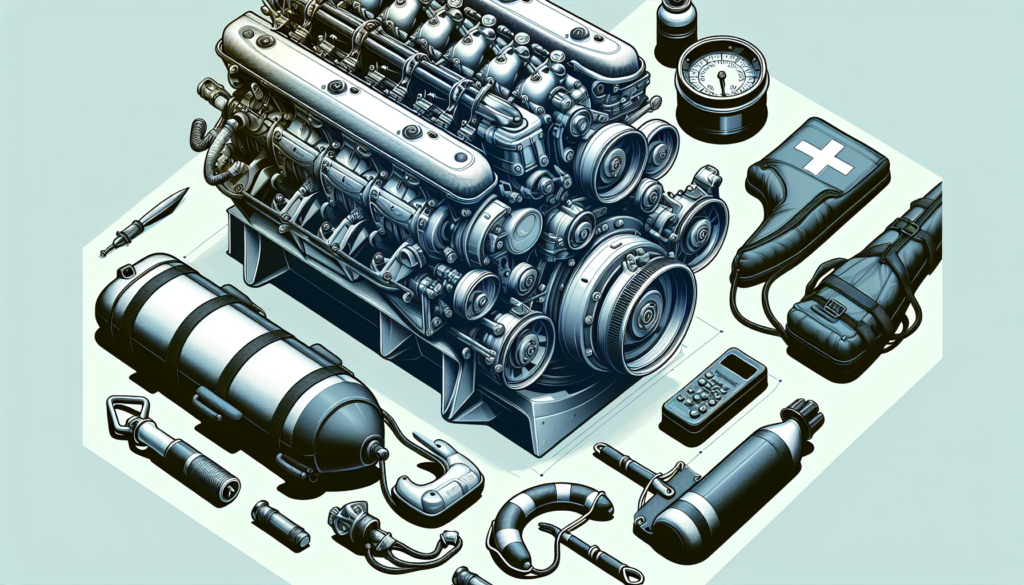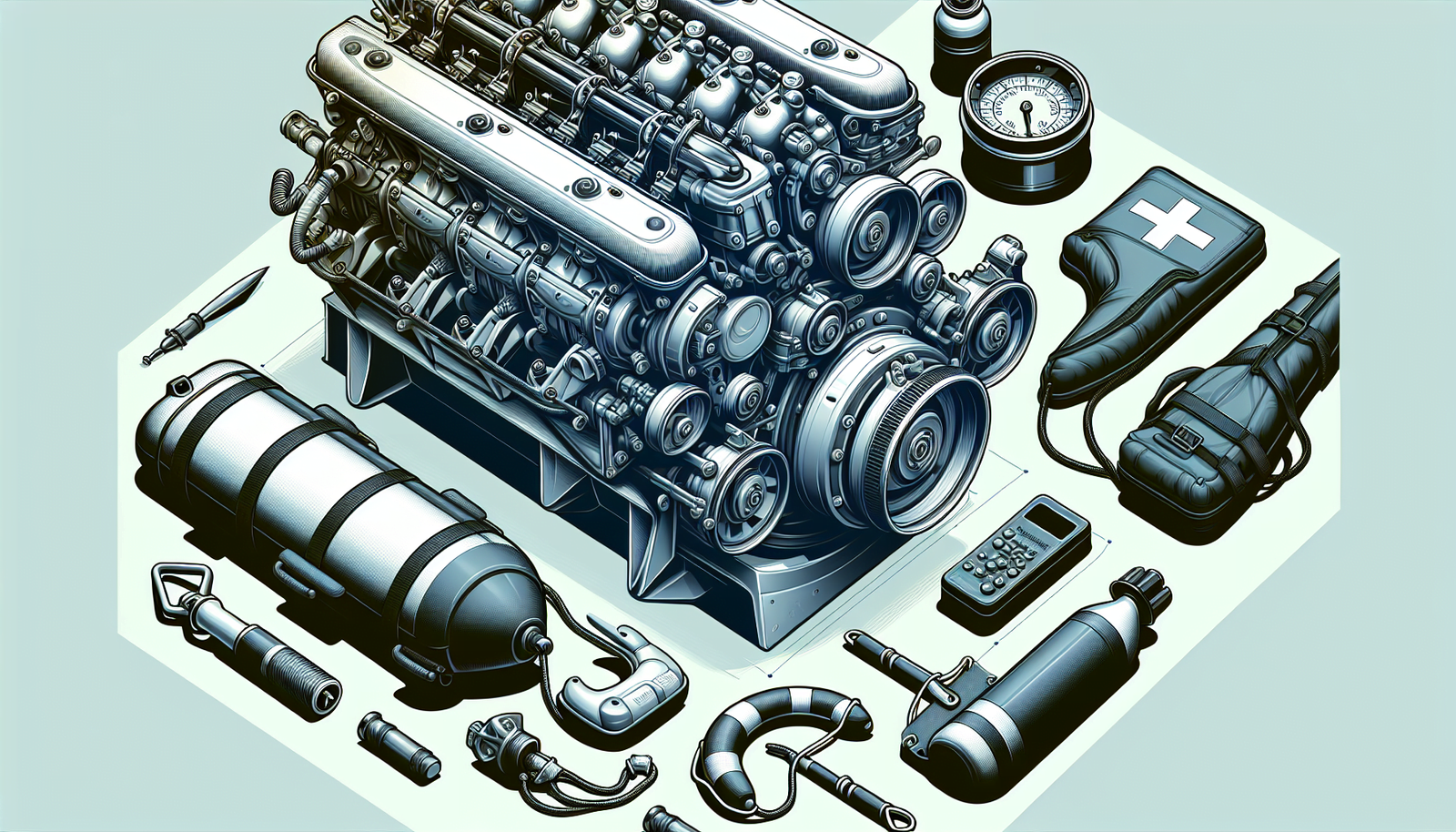Are you planning on venturing the open water with your boat? Well, ensuring your safety should always be your top priority. Before you even think about turning the ignition, there are critical checks that you ought to follow diligently. “Essential Boat Safety Checks Before Starting Your Engine,” is a guide dedicated to providing you with important insights on the preventative measures and checks to carry out prior to starting your boat’s engine. This guide is your perfect companion for safe voyages. Let’s not allow a neglected safety check lead to any untoward incidents. So, buckle up and prepare yourself for an adventure that’s not only thrilling but safe as well.

Inspecting the Hull
Ah, the almighty hull–the heart of your boat. Before you start your engine and embark on an aquatic adventure, your first task should be inspecting the hull.
Checking for Cracks
Your hull’s unblemished integrity is crucial for safe boating, so you need to check it meticulously for any cracks. This isn’t merely about the aesthetic appeal of your boat, but more about your safety. You see, even the smallest of cracks can expand under the pressure of water and compromise the overall structural integrity of your vessel.
Looking for Any Damage
After you’re done looking for cracks, shift your focus and inspect the hull for any other visible damage. This could be dents, scratches, or holes that may put your sea-worthiness at risk. And remember, even minor damage can sometimes pose major issues once you hit the water.
Inspecting for Leaks and Water Traces
Lastly, you need to check for potential leaks and traces of water. If you find water inside the hull, it’s a clear indication of a leak, which can lead to your boat taking on water. It might seem obvious, but it’s crucial not to overlook this step before you depart.
Evaluation of the Bilge
Once you’ve thoroughly inspected the hull, your next stop should be the bilge.
Ensuring Pump Operation
Without a properly functioning bilge pump, excess water could result in sinking or capsize. Therefore, always check your bilge pump operation. It involves simply turning on the pump and ensuring it’s working efficiently and effectively draining any excess water.
Checking for Oil or Fuel Leaks
While you’re at it, also take a moment to look for any signs of oil or fuel leaks in your bilge. Besides being harmful to the environment, oil or fuel leaks could be an indication of something seriously amiss with your engine or fuel system.
Verifying Cleanliness and Dryness
A clean, dry bilge is a happy bilge. Not only does this mean that it’s leak-free, but it also ensures that your bilge pump runs more efficiently.
Checking the Fuel System
With your hull and bilge in check, it’s now time to shift your focus to the fuel system.
Inspecting Fuel Lines and Connections
A faulty or loose fuel line can lead to fuel leaks, which are both dangerous and wasteful. Ensure that your fuel lines and connections are intact and secure to prevent any unpleasant surprises once you’re out on the water.
Looking for Leaks or Damage
During your inspection, also look for any leaks or damage to the fuel tanks. A leak can not only lead to loss of fuel but can also pose a considerable fire risk.
Checking Fuel Levels
Before heading out on the water, make doubly sure you have enough fuel for your journey—and a little extra for unforeseen circumstances. This doesn’t just prevent getting stranded; it’s also good for your engine. Running a boat engine dry can cause serious damage.
Ensuring Ventilation of the Fuel Area
Ventilation is key to preventing the build-up of harmful vapors that could potentially lead to a fire. See to it that your fuel area is properly ventilated.
Engine Check-up
Now, let’s get under the hood and give your boat’s engine the once-over.
Assessing the Engine’s Overall State
Look at the engine’s general state, checking its physical appearance for any obvious signs of rust, corrosion, or damage. Don’t forget to listen for any unusual noises when you start it up. These could be signs that all is not well inside.
Checking for Leaks
Scan the area below the engine for any oil or coolant spills. If you spot any leaks, consult a professional mechanic to get them rectified.
Confirming Proper Fluid Levels
Just like a car, your boat engine requires the right levels of various fluids to run smoothly. Check the engine oil, transmission fluid, coolant, and power steering fluid.
Ensuring Battery is Charged and Connected
One thing you don’t want is to be stuck in the middle of a lake with a flat battery. Not only should your battery be fully charged, but all connections should be clean, tight, and corrosion free.
Verifying Fire Extinguishers
Assuring Fire Extinguisher’s Present and Accessible
Safety first! Fire extinguishers are an essential piece of safety equipment on any boat. Make sure it’s in an easily accessible location and all aboard know where it is.
Ensuring Fire Extinguisher is Fully Charged
A fire extinguisher is pretty much useless if it isn’t fully charged. Take a moment to check the pressure gauge to ensure it’s in the green zone.
Checking Expiry Dates
Did you know fire extinguishers have an expiry date? Double-check yours to make sure it’s still good to go.
Inspection of Safety Equipment
Inspecting Life Jackets
Always ensure you have enough life jackets for all those aboard. They should all be in good condition and the right size for the wearer.
Ensuring Navigation Lights Work
Navigation lights are crucial for visibility, especially if you plan to sail after sunset. Check whether all of them are operational before setting off.
Checking Sound Signaling Devices
Just like lights, sound-signalling devices, like horns or bells, are important for safe boating. Whistles and air horns can be crucial in alert situations.
Reviewing First Aid Kit Supplies
It’s also imperative to have a well-stocked and up-to-date first aid kit. You never know when you might need it!
Steering System Check
Testing the Steering for Responsiveness
Next, test your steering system for responsiveness. A faulty steering system can cause serious handling issues, which is something you would want to avoid, especially in rough water.
Inspecting Hydraulic Fluid Levels
If your steering uses hydraulic power, check the fluid level. Low levels can affect the steering’s performance.
Checking for Signs of Wear or Damage
Inspect your steering system for any signs of wear or damage which might affect its operation.
Checking the Electrical System
Reviewing Wiring for Any Damage
Damaged or frayed wiring can lead to major electrical problems. Always check your wiring regularly for any potential issues.
Checking the Operation of the Fuse Panel
Your fuse panel protects the boat’s electrical system, so make sure all fuses are in good shape and functional.
Ensuring Lights are Functional
All interior and exterior lights should be fully operational. As with navigation lights, interior and exterior lights play a big role in visibility.
Reviewing the Propeller
Inspecting the Propeller for Damage
Even minor damage to your propeller can affect your boat’s performance. Carefully inspect your propeller for any signs of damage before you set sail.
Verifying Propeller Is Secure
Also, make sure your propeller is secure. A loose propeller could disengage during operation which could be dangerous.
Ensuring the Propeller Shaft Is in Good Condition
Finally, double-check the condition of your propeller shaft. A corroded or worn out shaft could potentially lead to propeller failure.
Communications and Navigation Systems
Checking the VHF Radio is Fully Functional
In case of emergency, being able to call for help is crucial. Ensure your VHF radio is in excellent working order.
Ensuring GPS and Chartplotters are Working Correctly
Global Positioning System (GPS) and chartplotters help you navigate and stay on course. Check their functionality to ensure you don’t lose your way.
Validating that Compass is Accurate
Old school as it may be, a compass is still an essential navigation tool. Make sure yours is accurate before you set sail.
Remember, boat safety checks should never be seen as an inconvenience or a chore. They are the best line of defense against potential mishaps or inconveniences out on the water. Spend that little extra time carrying out these checks because a safe boating is a happy boating.

